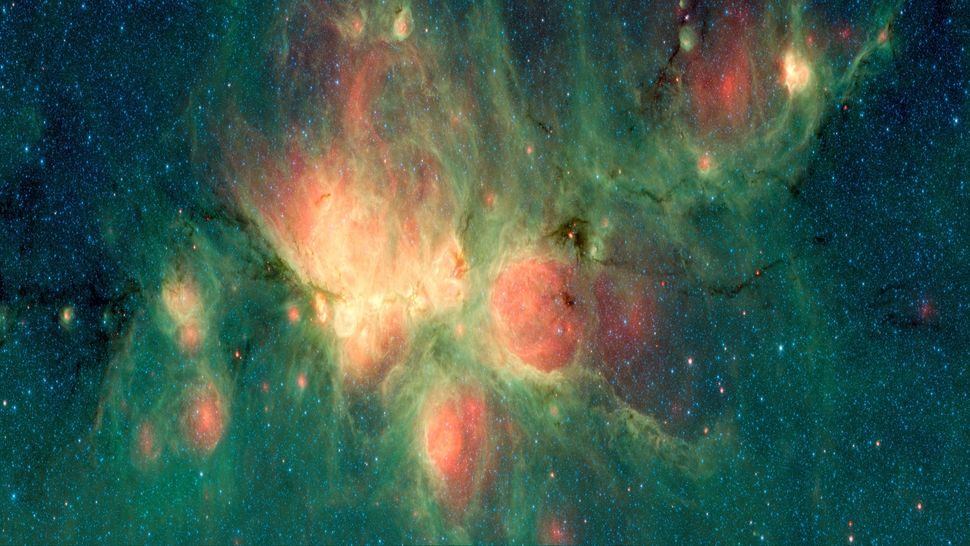Science
Related: About this forumDusty 'Cat's Paw Nebula' contains a type of molecule never seen in space -- and it's one of the largest ever found
By Victoria Atkinson published 14 hours ago
Scientists have detected a new, unusually large molecule never seen in space before. The 13-atom molecule, called 2-methoxyethanol, was detected in the Cat's Paw Nebula.

The Cat's Paw Nebula, photographed here by NASA's Spitzer Space Telescope, is a vast cloud of gas 5,500 light-years from Earth. New research suggests it contains a molecule never seen before in space. (Image credit: NASA/JPL-Caltech)
Researchers have detected an unusually large, previously undetected molecule in the Cat's Paw Nebula, a star-forming region about 5,500 light-years from Earth. At 13 atoms, the compound, called 2-methoxyethanol, is one of the largest molecules ever identified outside our solar system, the scientists reported April 12 in The Astrophysical Journal Letters.
We often think of space as a yawning chasm of nothingness between stars, but this apparent emptiness is alive with chemistry as atoms come together and break apart to create stars and planets over millions of years. Understanding how simple organic molecules such as methane, ethanol and formaldehyde form helps scientists build a picture of not only how stars and galaxies are born but also how life began.
However, detecting these basic building blocks of life is no mean feat. Every molecule possesses a unique energy "barcode" — a collection of specific wavelengths of light that the molecule can absorb. At a quantum level, each absorbed wavelength corresponds to a transition between one rotational energy level and another, and every molecule has a different-but-well-defined set of energy levels where these transitions may occur. This barcode of energy transitions is easily measured for samples in the lab, but astrochemists must then hunt out this same energy signature in space.
"When we observe interstellar sources with radio telescopes, we can collect the rotational signal from the gaseous molecules in these regions of space," first study author Zachary Fried, an astrochemist at MIT, told Live Science in an email "Because the molecules in space obey the same quantum mechanical laws as those on Earth, the rotational transitions observed in the telescope data should line up with those measured in the lab."
More:
https://www.livescience.com/space/astronomy/dusty-cats-paw-nebula-contains-a-type-of-molecule-never-seen-in-space-and-its-one-of-the-largest-ever-found
Trueblue1968
(18,876 posts)riversedge
(78,593 posts)diva77
(7,880 posts)airplaneman
(1,351 posts)Last edited Wed May 1, 2024, 10:50 PM - Edit history (1)
Asking for Lee Cronin